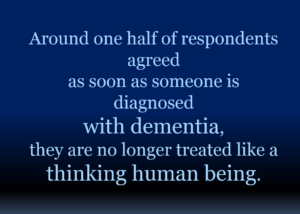Introduction
This post looks at suicide risks on college campuses.
I had the privilege of spending time at my alma mater addressing issues on behalf of students and mental health services. It is shocking to know the extent to which college suicides have become present on college campuses. I wonder when things changed. Isn’t college supposed to be the “best four years of your life?” It really doesn’t take much though to appreciate how this becomes the case.

Suicide Data
Suicide is the second leading cause of death among college-age students in the United States and the third leading cause among those aged 15-24. There are approximately 1,100 deaths by suicide occurring in this age group each year. A recent study from Johns Hopkins and the University of Maryland went in-depth in surveying and analyzing why students may have thoughts on suicide. Here is a summary of some of the study’s findings:
- 12% of those studied admitted that they had thought of committing suicide.
- Of this group of 12%, approximately 25% of them said they had those thoughts repeatedly.
- Depression and lack of social support appeared to be major factors contributing to thoughts of suicide.
 Risks for Suicide at College
Risks for Suicide at College
If you actually think about it, college brings together a lot of risks for suicide.
- Late adolescence and early adulthood are the periods of highest risk of developing a major psychiatric disorder.
- The academic environment can be a stress-producing inferno for some. Unfortunately, many students find themselves overwhelmed and feeling lost and as if they have nowhere to turn.
- For many, college is the first time many are away from home and/or completely detached from the family and friends they’ve had their entire lives. As a result, levels of isolation are overwhelming unless and until a sufficient new social network is established.
- Even among those with social networks, the academic failure and any social rejection that may occur could be perceived by students as having life-long consequences. Subsequently, hopelessness and thoughts of suicide are easily set into a young adult’s mind.

Practically, how might you consider the risk in any one individual? The presence of any of these risk factors should prompt implementation of a support system to counter feelings of suicide.
- It shouldn’t be difficult to appreciate how the lack of social support is one of the most powerful predictors of persistent suicidal thoughts. Appreciate that someone expressing or having feelings of being unappreciated, unloved and uninvolved with family and friends should be considered at risk. Unfortunately, this is true even in the absence of any other risk factors.
- Those with a history of clinically diagnosed depression or other psychiatric diagnoses are at significant risk.
- Also, risk exist in those with exposure to domestic violence (either witnessing or having been abused) in childhood.
- Finally, having a mother with a history of clinical depression also increases the risk of suicide in students.
There are many Straight, No Chaser posts that address suicide prevention, diagnosis and treatment.
Follow us!
Ask your SMA expert consultant any questions you may have on this topic. Also, take the #72HoursChallenge, and join the community. Additionally, as a thank you, we’re offering you a complimentary 30-day membership at www.72hourslife.com. Just use the code #NoChaser, and yes, it’s ok if you share!
Order your copy of Dr. Sterling’s books There are 72 Hours in a Day: Using Efficiency to Better Enjoy Every Part of Your Life and The 72 Hours in a Day Workbook: The Journey to The 72 Hours Life in 72 Days at Amazon or at www.jeffreysterlingbooks.com. Another free benefit to our readers is introductory pricing with multiple orders and bundles!
Thanks for liking and following Straight, No Chaser! This public service provides a sample of http://www.SterlingMedicalAdvice.com (SMA) and 844-SMA-TALK. Likewise, please share our page with your friends on WordPress! Also like us on Facebook @ SterlingMedicalAdvice.com! Follow us on Twitter at @asksterlingmd.
Copyright ©2013- 2019 · Sterling Initiatives, LLC · Powered by WordPress


















































































